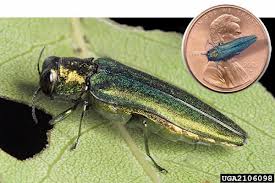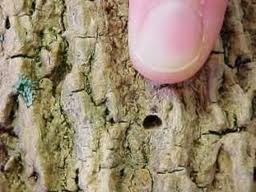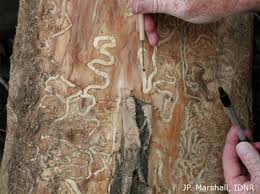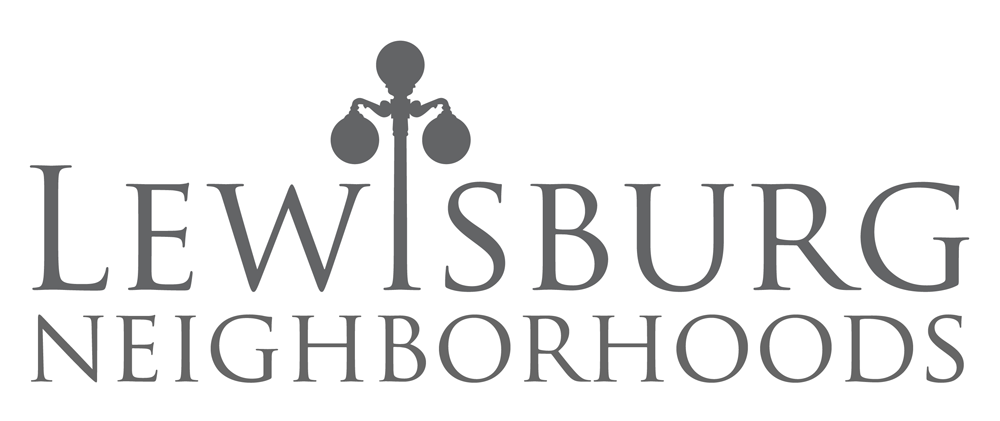 Pennsylvania has been battling the encroaching Emerald Ash Borer infestation for several years now. Anyone who has camped in a PA State Park is familiar with the restrictions imposed by DCNR on the movement of firewood which have been part of the control protocol. But that battle is essentially lost. The ash borer is here and soon many of the ash trees won't be.
Pennsylvania has been battling the encroaching Emerald Ash Borer infestation for several years now. Anyone who has camped in a PA State Park is familiar with the restrictions imposed by DCNR on the movement of firewood which have been part of the control protocol. But that battle is essentially lost. The ash borer is here and soon many of the ash trees won't be.
What can be done? It is important to get a sense of the total number of trees in the area. The Lewisburg Borough Shade Tree Commission has been conducting a study specifically of ash trees in the public spaces of the borough. This is the first step toward developing a strategy for addressing the problem. The strategy will most likely involve some treatment and some removal and some replacement. Several years ago, treatment was very expensive. At the time, it almost stopped the discussion in its tracks. But now, both the condition of the trees locally and the cost of care have changed. It also depends on how much damage has already been inflicted on a given tree. Especially for trees with exit holes visible low in the trunk, epicormic sprouts and woodpecker damage, it may be too late. But it's a good idea to assess whether a tree has particular value as a solitary unit or is more part of a wooded area. In the case of landscape accents, treatment may be the way to go, whereas, in a more continuous wooded setting, removal and replacement may be in order.
 Property owners are also faced with the challenge of deciding what to do for any ash trees they own. There are currently two types of treatment available: soil injections and trunk injections. The soil injection can be done any time of year, though right now is particularly good. It is typically performed yearly. But it is not recommended in areas where there is already an active pest problem (look for D-shaped exit holes in the bark and epicormic sprouts extending directly from the distressed trunk). It's more for the fringes of the infestation. Trunk injections on the other hand work best when the leaves are on the tree and the circulatory system is in action. In that case, getting it done as soon as the tree is leafed out is advisable as it will act systemically and will be present in the leaves later in the summer (June/July) when the adult pests are transiting from tree to tree and eating the leaves and laying eggs for the larvae that will in turn bore into the living tissue of the tree just under the bark and destroy its viability. If those leaves are infused with the pesticide, it can cut down on that life cycle as well. Trunk injections are recommended to be performed every other year, though that interval may lengthen.
Property owners are also faced with the challenge of deciding what to do for any ash trees they own. There are currently two types of treatment available: soil injections and trunk injections. The soil injection can be done any time of year, though right now is particularly good. It is typically performed yearly. But it is not recommended in areas where there is already an active pest problem (look for D-shaped exit holes in the bark and epicormic sprouts extending directly from the distressed trunk). It's more for the fringes of the infestation. Trunk injections on the other hand work best when the leaves are on the tree and the circulatory system is in action. In that case, getting it done as soon as the tree is leafed out is advisable as it will act systemically and will be present in the leaves later in the summer (June/July) when the adult pests are transiting from tree to tree and eating the leaves and laying eggs for the larvae that will in turn bore into the living tissue of the tree just under the bark and destroy its viability. If those leaves are infused with the pesticide, it can cut down on that life cycle as well. Trunk injections are recommended to be performed every other year, though that interval may lengthen.
A rough estimate of the current cost for trunk injections would be $10/diameter inch of trunk at breast height. Those costs can vary. For especially large specimens, soil treatment may also be advised. So for a tree with a 24" trunk diameter ABH, that would be roughly $240 to treat every two years.
 Removal and replacement are very dependent on the location and access to the tree, but they are considerably more expensive. Especially in the borough, where there may be constrained room to work and lots of property to protect, it may be particularly costly.
Removal and replacement are very dependent on the location and access to the tree, but they are considerably more expensive. Especially in the borough, where there may be constrained room to work and lots of property to protect, it may be particularly costly.
Having a large number of injections to perform in an area can also reduce the price some. If there are many people in the borough interested in getting some key specimens treated, we can perhaps look into trying to put it together into a single proposal. If you have ash and are interested in pursuing something like that, contact the Elm Street Program by emailing elmstreet@dejazzd.com or calling 570.523.0114.

